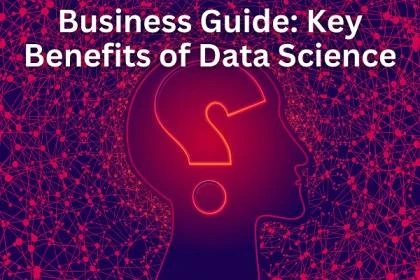Identifying Your Business Application for Data Science
Data science is quickly becoming a crucial part of business operations. With the ability to identify patterns and trends in large datasets, data science can help companies gain valuable insight into customer behavior and market opportunity. Companies that leverage data science can gain a competitive edge on their competition by optimizing processes and making better decisions.
If you’re new to data science, it can be overwhelming deciding how to best apply it to your business. In this guide, we’ll give you an overview of all the aspects of data science that can help your business succeed.
First, it’s important to understand the benefits of data science. Data science allows organizations to uncover insights from large datasets that would otherwise remain hidden or unknown. By analyzing all sources of data, businesses can make more informed decisions and identify potential issues before they arise. Additionally, by using machine learning algorithms, companies are able to automate processes, optimize customer service and gain a competitive advantage over other businesses who aren't leveraging this technology.
Once you understand the benefits of data science for your business, the next step is identifying what needs it can meet for your particular organization and customers. Your unique needs depend on your industry, size and goals as a company, but understanding what problems or opportunities data science could solve helps narrow down which sources should be analyzed. Additionally, having clear objectives in mind when getting started with data science will help guide your implementation process so that you get more value out of your investment in this technology.
When looking through different sources of data such as customer surveys or financial records, it's important to consider how accurately they reflect reality.
Exploring the Different Types of Data Visualization Methods and Their Uses
Data visualizations are a powerful tool for data science, helping business professionals gain insight into trends and correlations among data sets. Knowing the different types of visualization methods can help you make informed decisions about how best to use them in any given situation. In this post, we'll explore two of the most common types of visualization: 2D and 3D.
2D Visualization:
2D visualizations present information on a flat surface in graph, chart, or table form. Common examples include pie charts, line graphs, and scatter plots; these are great for quickly conveying information in a concise way. 2D visuals are often used to show relationships between two variables on a single axis (e.g., profit vs expenses). These visuals are relatively easy to interpret and they don’t require specialized training to understand.
3D Visualization:
3D visuals are similar to 2D visuals except they add another layer of depth that can help more sophisticated users gain an even deeper insight into the data set in question. 3D visuals use shading and perspective effects to better differentiate between elements within the data set(s). While these visuals also can be used for basic tasks such as seeing trends across multiple categories at once, their key benefit is that they allow users to visualize multidimensional data sets with ease. This makes 3D visuals particularly useful for anomaly detection and predictive analysis.
No matter which type of visualization you use – 2D or 3D – understanding the basics is essential for ensuring your data science efforts produce meaningful results. With the right approach and tools, you can quickly make sense of complex datasets and confidently make decisions about what actions need to be taken next.
Data Science Course in Pune
Understanding Trends and Conditions Impacting Your Business Goals with Machine Learning Models
Having a solid understanding of trends and conditions that impact your business goals is important for success. But keeping up with the everchanging landscape of data can be difficult for businesses to understand. That’s where machine learning models come in.
Machine Learning models are powerful tools that allow businesses to analyze vast amounts of data and uncover hidden insights they may have missed. With the help of machine learning models, businesses can develop predictive analytics that can identify trends and conditions, both current and future, impacting their bottom line.
Unlike traditional modeling techniques, which only utilize historical data, machine learning models can use both current and past data to develop accurate predictions about how the market will behave in different scenarios. This allows businesses to better assess business risk by being able to predict how various changes might affect their goals.
In addition, machine learning models make it easier for businesses to identify opportunities for growth or improvement by providing an array of data points for analysis. This helps inform decisions made by allowing certain conditions or trends to be taken into account. By using this information companies can create strategies that are more tailored to achieving their goals while reducing overall risks they take on the way there.
Ultimately, understanding trends and conditions impacting your business goals is essential; with the help systemized processes enabled by machine learning modeling you can ensure that you have access to intelligence gathered from vast amounts of data that informs your decision making process when it comes down to taking actions on key business decisions without risking any potential downtime or losses due to lack of information or preparation time needed when relying solely on human intuition alone.


